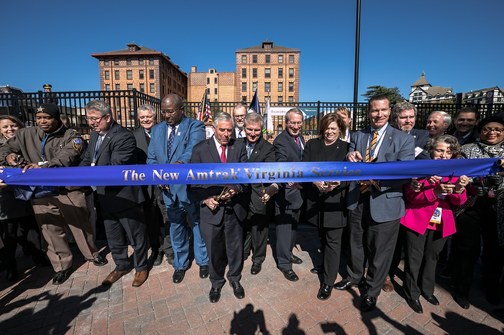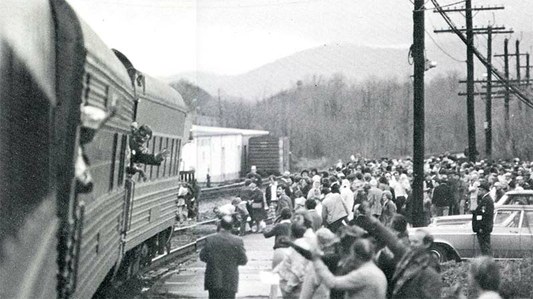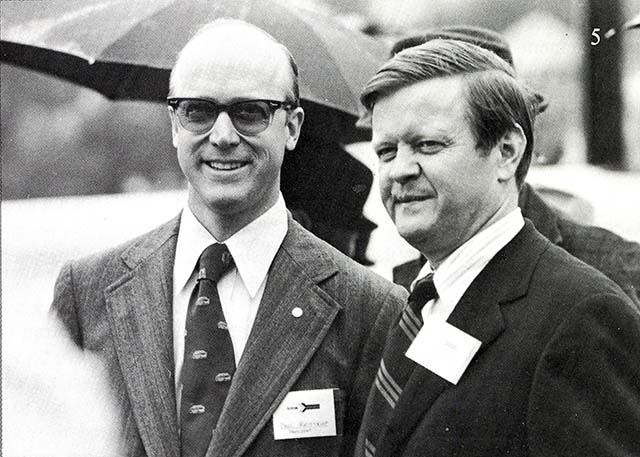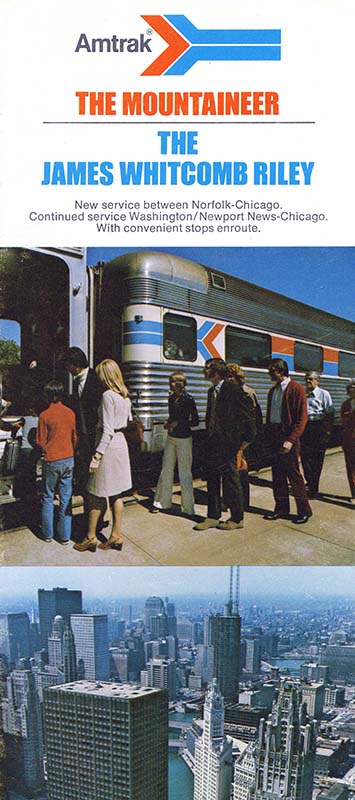Amtrak’s “Star City” Homecoming
CommentsOctober 30, 2017

State, local and Amtrak officials gathered in Roanoke to celebrate the return of Amtrak service to the city.
Cheering crowds gathered in Roanoke, Va., on Oct. 30, 2017, to greet the arrival of the inaugural Northeast Regional as it pulled into downtown. Aboard the special train, which departed from Lynchburg, were representatives from the Commonwealth of Virginia, Amtrak and the city of Roanoke. Regularly-scheduled service between Roanoke and Boston began the next day. The new Roanoke station is within easy walking distance of popular attractions including the Virginia Museum of Transportation, Taubman Museum of Art and the City Market area.
Amtrak last served southwest Virginia’s largest city with the Hilltopper (Catlettsburg, Ky.-Washington-Boston), which was discontinued in 1979 as part of a larger Congressional mandate to streamline the Amtrak national system.
Amtrak, the Virginia Department of Rail and Public Transportation (DRPT) and the city partnered to bring intercity passenger rail service back to Roanoke. It represents the fourth major expansion of Amtrak service in Virginia in the last decade. This continued progress has in part been achieved through more than $100 million in strategic investments made by Virginia in Norfolk Southern rail infrastructure. Virginia, as one of Amtrak’s 18 state partners, helps fund Northeast Regional service within its borders.

The inaugural Mountaineer departs one of its stops (Bedford, Va.?) amid cheers from the crowd.
In 2009, a roundtrip Northeast Regional train was extended south from Washington to Lynchburg and five intermediate communities. Population growth in the region, which includes part of the Shenandoah Valley, and increasing congestion on Interstate 81 and Route 29, suggested corridor-style passenger service would be an attractive travel alternative.
Within its first year, the new Lynchburg service accommodated more than 126,000 trips – a 147 percent increase over the initial estimate of 51,000. Building on this early success, DRPT added a Northeast Regional frequency between Washington and Richmond in 2010. Two years later, rail service was also restored to Norfolk for the first time since 1977, complementing existing service to Newport News on the north side of the Hampton Roads area.

Then-Amtrak President Paul Reistrup (l) attends a
Mountaineer inaugural event.
The return of passenger rail builds on Roanoke’s heritage as a major railroad hub. For a century, the city was headquarters of the Norfolk and Western Railway (N&W). It played a significant role in developing the coal fields of southern West Virginia and southwestern Virginia and also operated passenger trains. Roanoke is today noted for its reenergized downtown, home to a variety of museums, restaurants, businesses and housing.
When Amtrak’s initial routes were unveiled in 1971, Roanoke was not included in the network. Following local advocacy, and the intervention of Senator Robert Byrd of West Virginia, service linking Norfolk and Chicago via Roanoke was launched on March 25, 1975. Known as the Mountaineer for the terrain that it covered through the Virginias, the route was approved by the U.S. DOT as a two-year experiment under the Amtrak Improvement Act of 1973.1
The first Amtrak train to operate over the former N&W, the Mountaineer ran with the James Whitcomb Riley (Washington/Newport News-Cincinnati-Chicago) between Chicago and Russell Yard just west of Ashland, Ky. For much of their trips east of Ashland, the two trains paralleled one another, with the Mountaineer taking a more southerly route. In Roanoke, Amtrak established a station – consisting of a platform and trailer – about five blocks west of the old N&W depot, which in the late 1940s had received a streamlined Art Moderne rehab overseen by noted industrial designer Raymond Loewy.

The Mountaineer generally consisted of a 10-roomette, six-double-bedroom sleeper, grill diner, two coaches (one a dome) and a baggage-dorm.2 The dome-coach offered customers splendid all-around views of the Shenandoah Valley and the mountains and rivers of West Virginia. Initial motive power was SDP40Fs, followed later by E series locomotives.3 In 1977, the train was converted to modern new Amfleet equipment, which had first entered service two years earlier.
Due to poor ridership and ticket revenues, Amtrak discontinued the Mountaineer after its two-year trial, although operation was extended through May 1977.4 But rather than terminate the route wholesale, Amtrak decided to modify the service in the hopes of creating a stronger product. On June 1, 1977, the company launched the new Hilltopper (Washington-Roanoke-Catlettsburg).
Much of the route west of Petersburg, Va., retained service, but the eastern terminus was moved from Norfolk to Washington, D.C. This offered easy connections to points throughout the greater Northeast. The Hilltopper also provided the first through-service from Richmond to western Virginia and added another roundtrip frequency to the busy Washington-Richmond corridor.
Hampton Roads-area residents connected to the Hilltopper at Petersburg via dedicated bus service. Echoing its predecessor, customers could transfer to the James Whitcomb Riley at Catlettsburg to reach Chicago. Indicative of ridership levels, the train was often made up of just an Amfleet coach and a café car led by an F40 locomotive.5 In January 1978, the train was combined with the Night Owl, which provided overnight sleeping car service between Washington and Boston.
In the end, the Hilltopper would only survive a little more than two years. A report released by the U.S. DOT in January 1979 analyzed all Amtrak routes for costs, ridership, tourism potential, transportation alternatives and other factors in an effort to discontinue the worst performers. Although members of Congress rejected the full complement of recommended cuts, the Hilltopper was not spared. The train made its last run on Sept. 30, 1979, ending intercity passenger rail service to Roanoke for nearly four decades.
Did you ever ride the Mountaineer or Hilltopper? Share your memories with us in the comments section.
1 Craig Sanders, Amtrak in the Heartland (Bloomington, Ind.: Indiana University Press, 2006).
2 Ibid.
3 Ibid.
4 “Mountaineer Becomes Hilltopper, Will Terminate In Washington” Amtrak NEWS, May 15, 1977.
5 Sanders.




